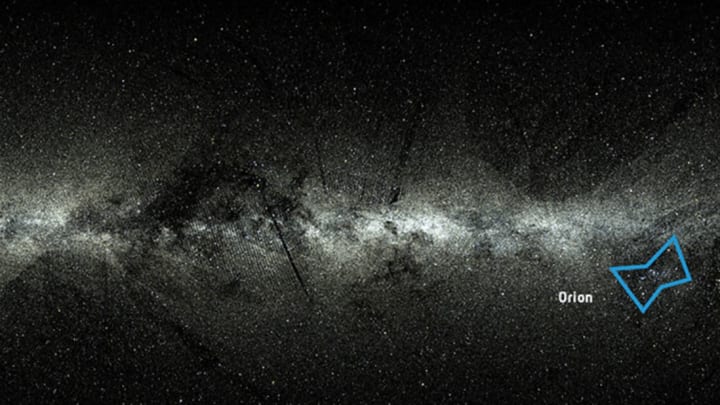Watch How Stars Will Move Over the Next 5,000,000 Years

The European Space Agency (ESA) recently published a video featuring data from their Gaia mission. Gaia is an effort to make a 3D map of the Milky Way. This entails figuring out where all the billion stars in our galaxy are, how they're moving, and how fast. It's a big job.
In the video, we see data for 2,081,370 stars moving over a simulated period of 5,000,000 years starting in roughly 2014. Each frame in the video simulates 750 years of movement. As the animation proceeds, we can see familiar constellations pull apart. As ESA writes:
The shape of the Orion constellation can be spotted towards the right edge of the frame, just below the Galactic Plane, at the beginning of the video. As the sequence proceeds, the familiar shape of this constellation (and others) evolves into a new pattern. Two stellar clusters – groups of stars that were born together and consequently move together – can be seen towards the left edge of the frame: these are the alpha Persei (Per OB3) and Pleiades open clusters.
Make this fullscreen, and have a look:
Note how the stars closer to us appear to be moving faster. Everything is relative in the galaxy—and our concept of star "positions" is only temporary.